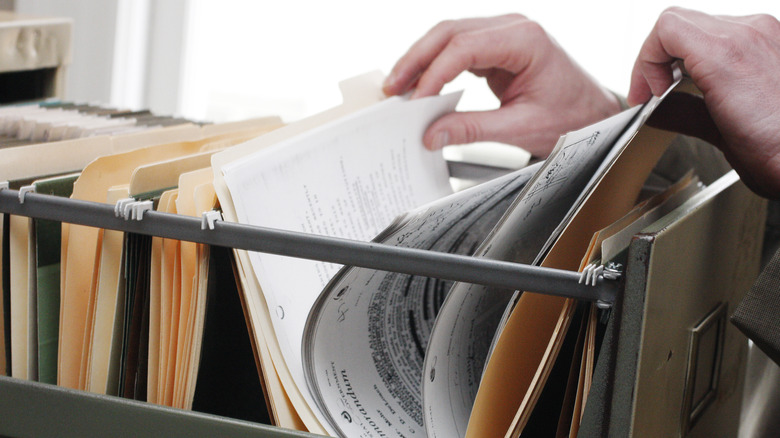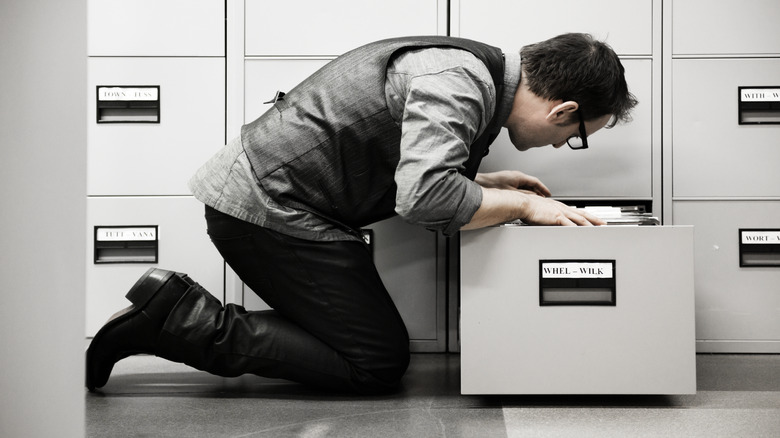How To Find And Show Hidden Files On Mac
Whether you're organizing files and folders or just need to free up space on your hard drive, there will likely come a point when you'll want to dig into some of the deeper areas of your Mac. The thing is, not all of the data installed on your system is visible by default.
In some cases, these files and folders may have been manually hidden — either by you or a previous or shared user — but there are also several items Apple has set to hidden out of the box (or upon installation). Regardless of the reasoning, you won't be able to touch these hidden items to move or delete them until you can actually find them in the first place.
Making the invisible visible (at least when it comes to files and folders in macOS) is a fairly simple process, but not one that's immediately obvious from the outset. And while it's possible to search for and reveal hidden items directly through the Finder, it's not something your Mac will allow by default. So you need to know how to go about it before you go looking for metaphorical ghosts in your machine.
Revealing those hidden files and folders
While there's one very simple and easy way to toggle visibility on and off for hidden files and folders, you do have a couple of other options if you'd prefer. You can do it inside Finder itself:
- To immediately reveal all hidden files and folders, press Shift + ⌘ (Command) + . (period) at the same time on the keyboard.
- If you want to make previously hidden files disappear again, press the same Shift + ⌘ (Command) + . (period) key combination a second time.
Or you can do it via the Terminal app:
- Click the Search (magnifying glass) icon in the top-right corner of the screen, then search for "terminal" and either press Return or click the first result.
- In Terminal, run the script: $ defaults write com.apple.Finder AppleShowAllFiles true
- Then type in $ killall Finder
- To hide everything again, enter the script but replace "true" with "false" before running it in Terminal.
Be aware that most of the hidden files in macOS aren't made visible by default to prevent accidental deletion of anything vital to the system. So unless everyone who uses your Mac knows what to look out for, it might be best to set everything back to being hidden once you've finished what you initially set out to do.
Locating hidden items
While most of your Mac's hidden files and folders are located in its hidden Library folder (not the regular one you can access through Finder), you may still need to search for them elsewhere.
- Click the Search (magnifying glass) icon in the top-right corner of the screen and search for "~/Library/"
- Click on the result in the Folders sub-category to open the hidden Library folder.
- To locate specific hidden items, open any Finder window.
- Click the Search field in the top-right corner of the window. Enter the name of the hidden item you're looking for, then press Return.
- Once the results are revealed (even if there are none), click the + (plus) button in the top-right corner — beneath Search and next to Save.
- A new menu bar will appear below the previous one, showing two drop-down menus.
- Click on the first drop-down menu (it should say Kind by default), then select Other from the list.
- In the new window, type "visible" in the search bar.
- Select File invisible from the results and check the In menu box to add visibility as a search criteria, then click OK.
- Go back to the search results window and click the second drop-down menu, then choose Invisible Items to search only for hidden files and folders using your original query.
Searching for invisible items will give you a better chance of finding hidden files and folders, but you'll need to know the right search terms to make use of it.


